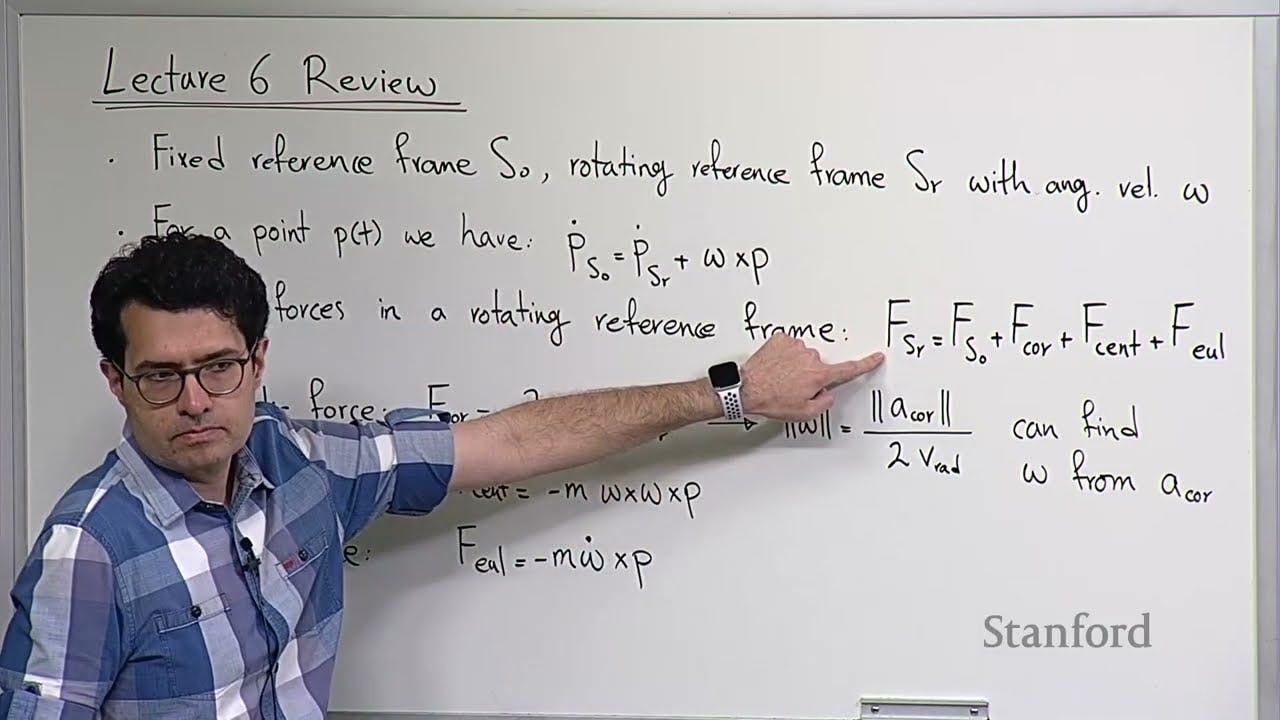Stanford EE259 I Inertial navigation, dead reckoning I 2023 I Lecture 7

The video discusses the concepts of gyroscopes and inertial navigation systems. It starts by reviewing the mathematical framework for studying rotations and the relationship between reference frames. The video then explores the forces observed in rotating reference frames, including the Coriolis force, centrifugal force, and Euler force. It explains how gyroscopes can be created by measuring the Coriolis acceleration using a specific type of accelerometer.
The video also delves into the mechanical architecture of a vibratory mechanical accelerometer, which is used to measure the Coriolis force. It explains how electrostatic actuators are used to generate the necessary force for the accelerometer.
The video discusses the concept of inertial navigation systems and how they utilize accelerometers and gyroscopes to track orientation and trajectory. It differentiates between stable platform INS systems and strap-down INS systems. It explains that stable platform INS devices mechanically align the accelerometers with the global reference frame, while strap-down INS devices use signal processing to align the measurements.
The video concludes by introducing the problem of orientation tracking and mentions different parameterizations for tracking orientation, such as Euler angles, quaternions, and direction cosines. It focuses on the use of direction cosines and rotation matrices for solving the problem.